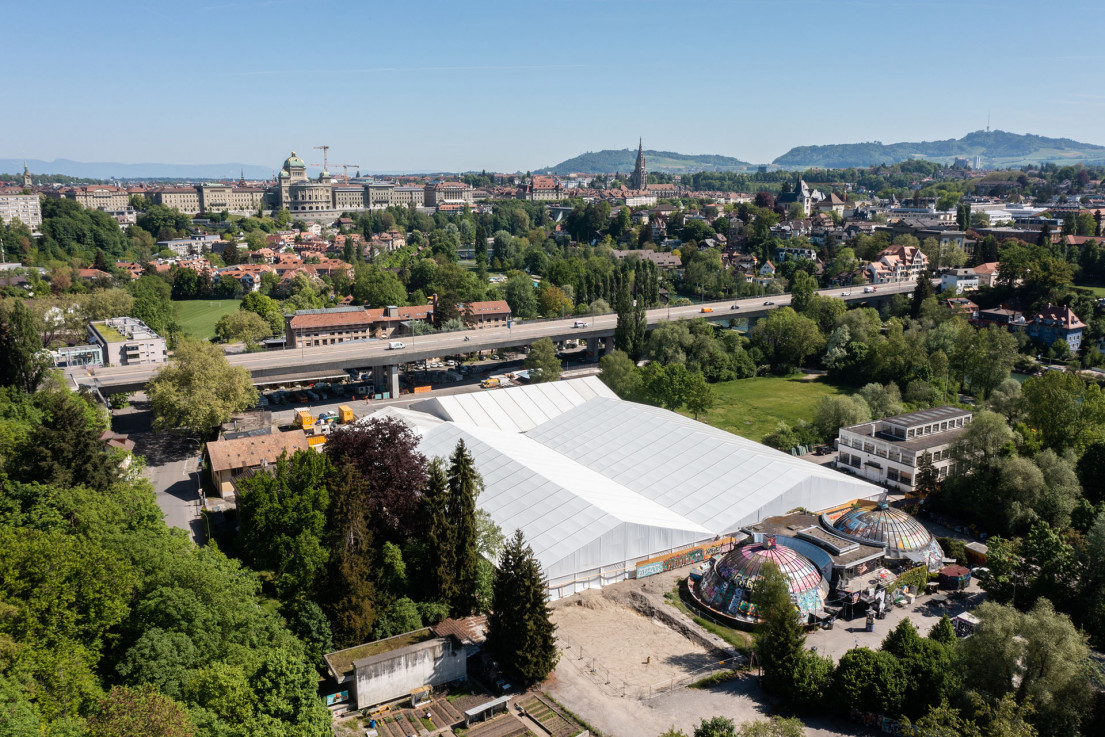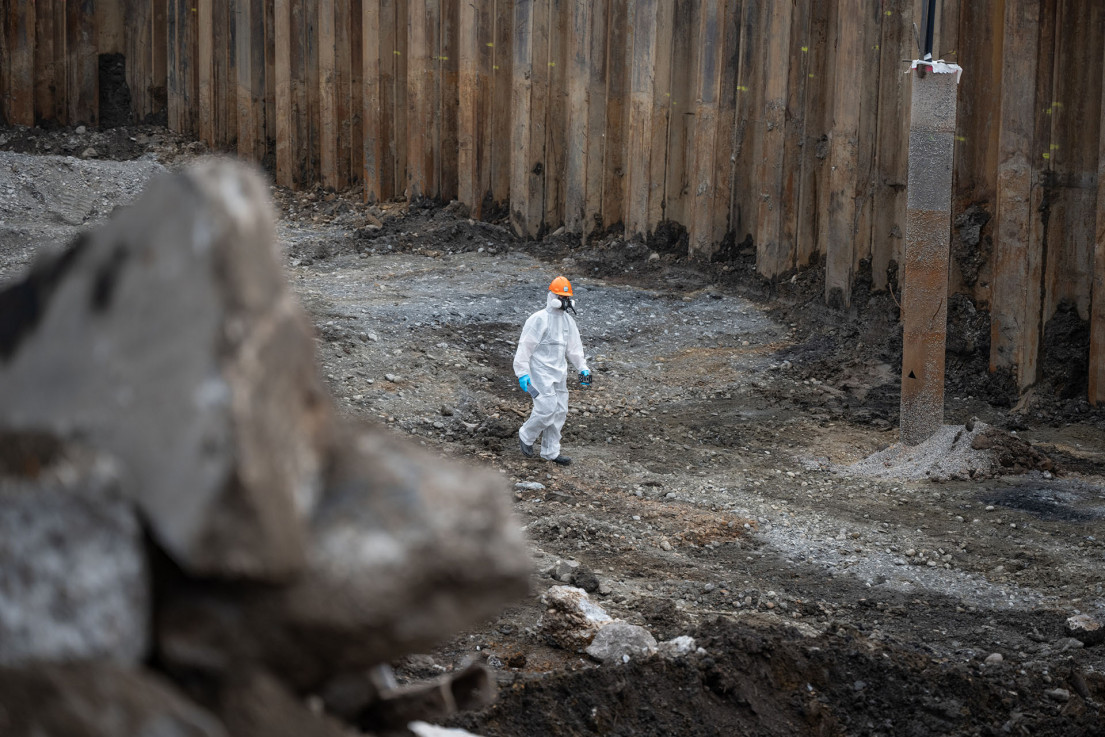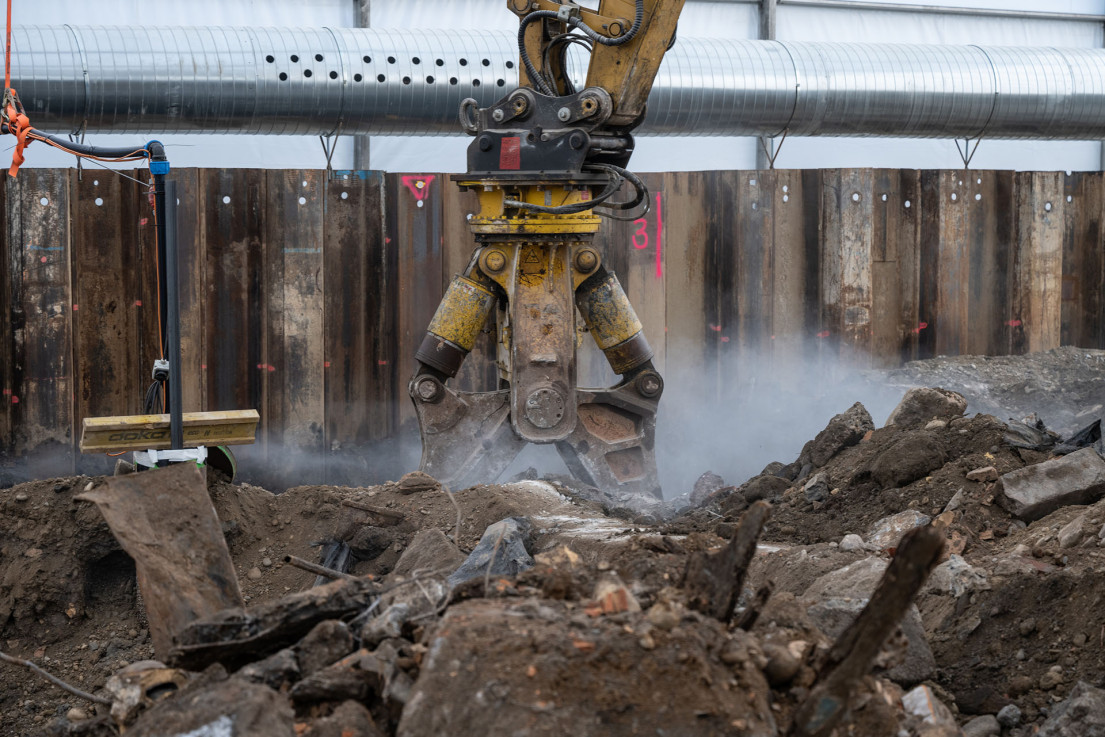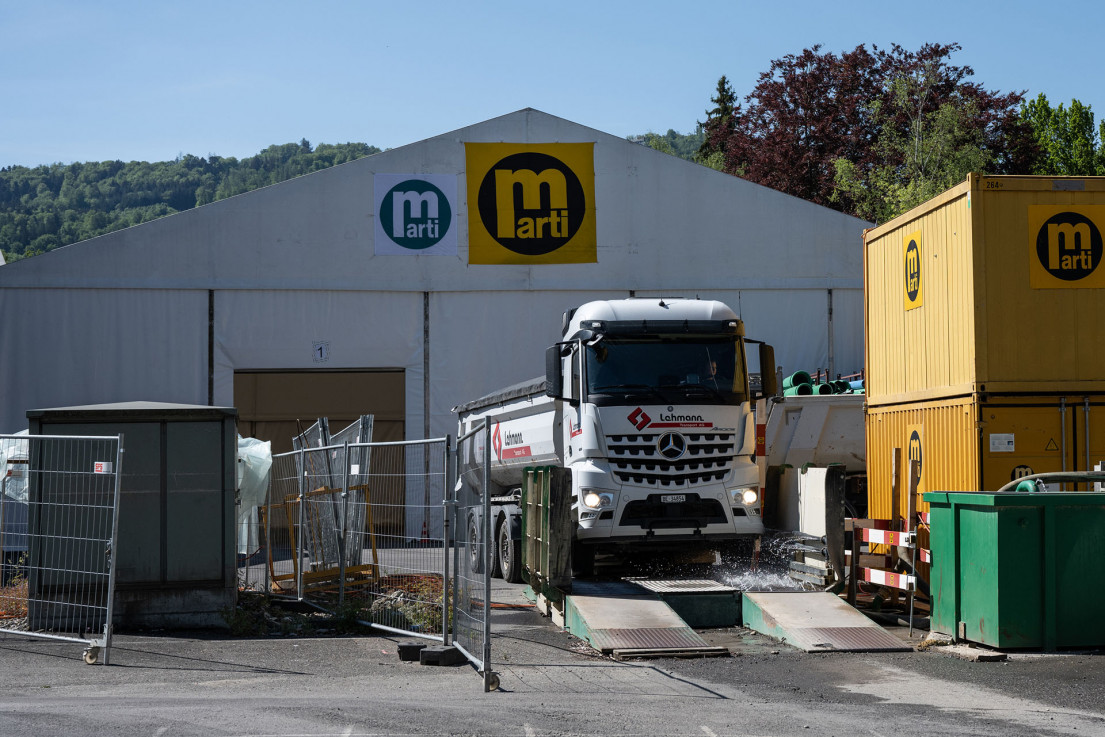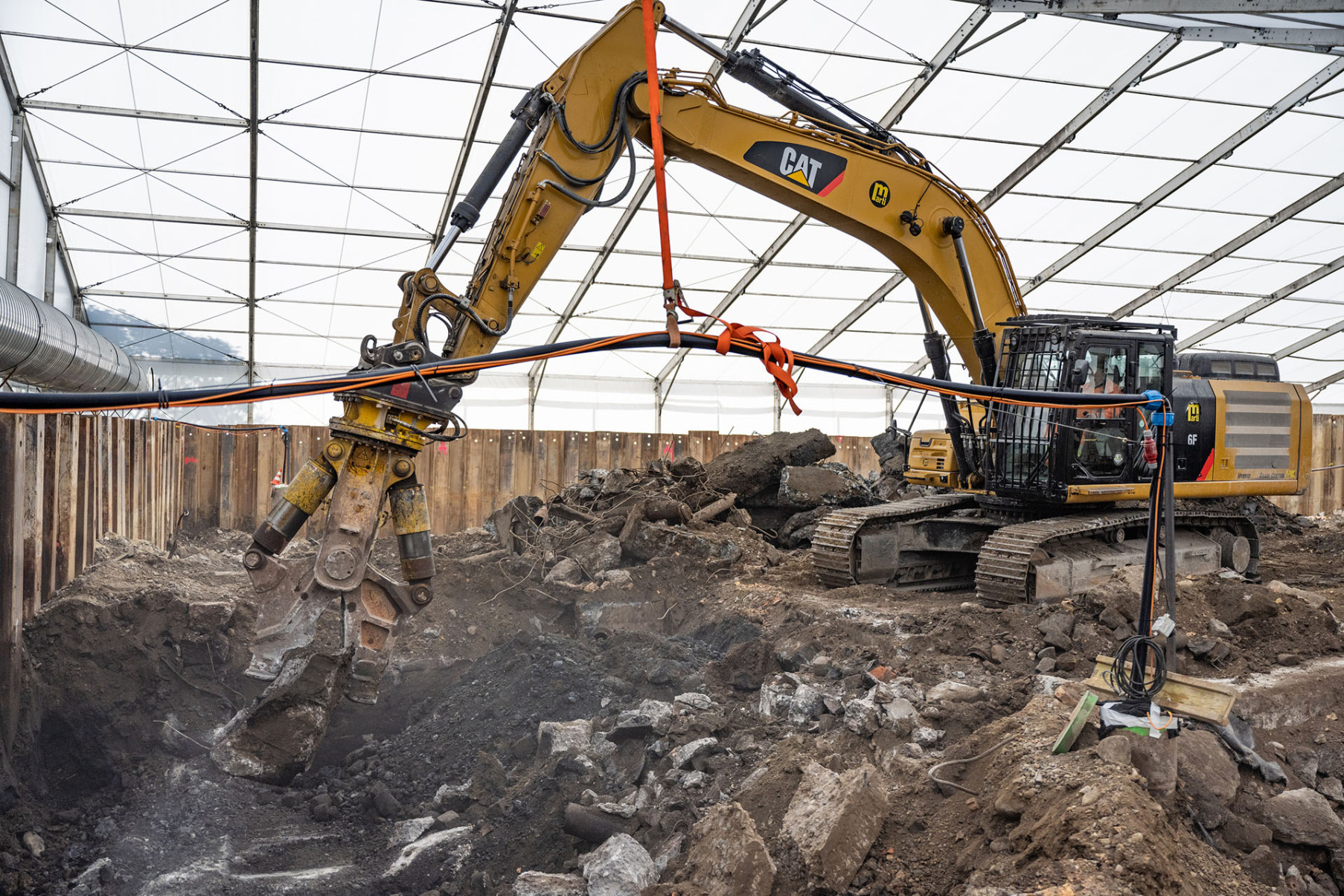
From a gasworks site to the city district
A new urban quarter is planned for the site of the former Sandrain gasworks in Bern. The level of soil pollution clearly reflects the effects of 90 years of gas production. Marti’s consortium ensures that the contaminated soil is properly prepared.
From 1876 to 1967, the Sandrain gasworks produced the city gas for Bern. The gas was initially used to light the streets and alleys of the city center. Later, it was also used to power cooking stoves, household heaters, and engines. In 1967, production came to a standstill after the city of Bern was connected to the long-distance gas network. The factory was decommissioned shortly thereafter. The site has since been idle and used for cultural purposes, storage, and even as a parking lot. In 2020, the City of Bern acquired the site in order to use it as building land. Energie Wasser Bern (ewb) has set out to hand over the “ärdeschön” (beautiful) site to the people of Bern as its final task.
MARTI RENOVATES
The required renovation works started at the end of August 2021. The main manufacturing building of the gasworks used to be located in the core zone. Marti Infra AG is a specialist in the remediation of contaminated sites and responsible for the planning and overall concept within the Marti consortium. Marti Bern’s special civil engineering department is completing the work on-site: The area was cleared and prepared, the topsoil was removed, and the grading and surfacing work was performed. In addition, sewer and utility lines were rerouted, filtration wells were installed to lower groundwater levels, and a water treatment plant was constructed.
At the beginning of winter 2021, Grund- und Tiefbau AG Solothurn installed the sheet pile walls around the excavation site so that the groundwater within the core zone could be lowered. In order to minimize the noise impact on the surrounding properties, they used a specially developed vibrating pile driver equipped with additional sound absorption.
The protective tents were set up on the site in January 2022. Approximately 9,000 m² of floor space was enclosed: The renovation perimeter (core zone) was under a double tent, a sluice, and an intermediate storage area. Elaborate exhaust air systems and negative pressure in the tents prevent bad smells and dust emissions from being released into the air.
“Many people don’t even fully appreciate how time-consuming it is to triage such heavily contaminated soils. We’re creating something for the future here, for sustainability. That makes us proud, too!”
Hard Facts
- Elaborate exhaust air systems and negative pressure in the tents prevent bad smells and dust emissions from being released into the air
- Excavation is performed in a protective tent under strict safety conditions; approximately 9,000 m² of floor space is enclosed
- Soil material ranging between 1.5 to 7 m is excavated; pollutants at even greater depths are extracted from the ground with around 800 boreholes, down to a depth of 11.5 m

